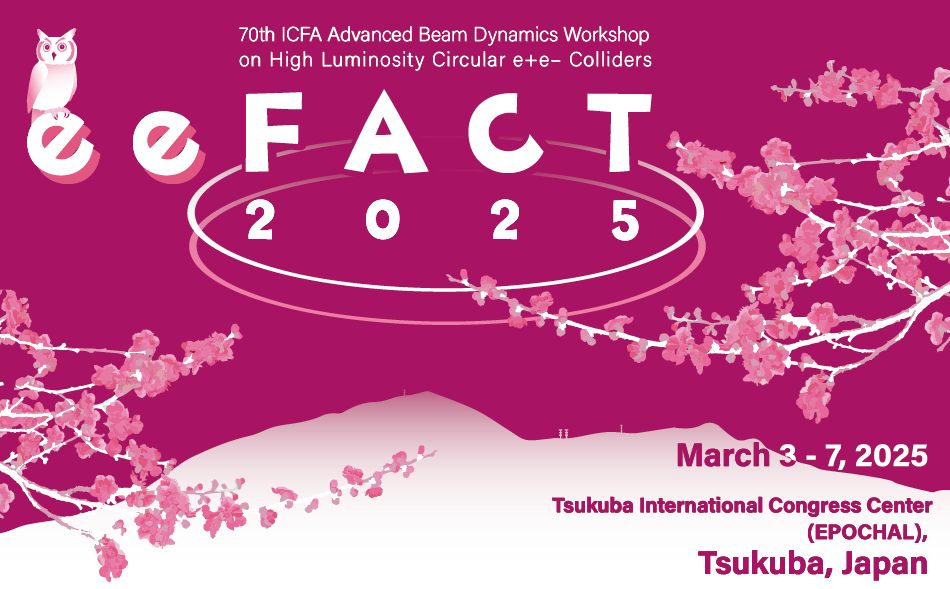The SuperKEKB accelerator at the Belle II experiment has achieved record luminosities, but increasing luminosity is hindered by Sudden Beam Loss (SBL) events, which can damage both the accelerator and detector components. To address this issue, we have developed and implemented advanced beam diagnostic and beam abort systems.
High-speed loss monitors, including PMTs and Electron Multiplier...
The current achieved highest luminosity at SuperKEKB is only one-tenth of the design value, and beam injection is one of the most serious issues in achieving the target luminosity. Recent operations in both the HER and LER rings have shown insufficient injection efficiencies and detector backgrounds. The achieved injection efficiency falls short of the required level, sometimes leading to...
Belle II is the only particle physics experiment at the SuperKEKB $e^+e^-$ asymmetric-energy collider. While SuperKEKB achieved a new world record for peak luminosity, $5.1\times10^{34}\,\textrm{cm}^{-2}\,\textrm{s}^{-1}$, in 2024, the background conditions at the Belle II detector became more challenging compared to previous run periods. In this presentation, we share our experience with...
The machine-detector interface (MDI) issues are one of the most complicate and challenging topics at the Circular Electron Positron Collider (CEPC). Comprehensive understandings of the MDI issues are decisive for achieving the optimal overall performance of the accelerator and detector. The machine will operate at different beam energies, therefore, a flexible interaction region design will be...
The Future Circular Collider electron-positron (FCC-ee) is a proposed high-energy lepton collider that aims to reach unprecedented precision in the measurements of fundamental particles. However, several beam related processes produce particles in the Machine-Detector Interface (MDI) region, which can adversely affect the measurements' accuracy. This contribution presents the status of the...
The Super Tau-Charm Facility (STCF), proposed in China, is a new-generation high luminosity e+/e− collider in the low-energy region of 1-3.5 GeV. To achieve the target luminosity of larger than 5×10^34 cm^−2s^−1, a large crossing angle and crab-waist correction scheme is applied. It is well-known that nonlinearity within the interaction region (IR), particularly due to crab sextupoles,...
The Electron-Ion Collider (EIC), under construction at BNL, is a groundbreaking facility designed to explore the fundamental structure of matter. By colliding high-luminosity polarized electron and ion beams, the EIC will probe the spin, mass, and spatial distributions of quarks and gluons, addressing key questions in QCD. However, mitigating beam-induced backgrounds remains a critical...
The FCC-ee Interaction Region is compact and complex, aimed to reach the highest luminosities at all centre-of-mass energies, from the Z pole to the t-tbar threshold. Its layout must integrate accelerator components such as lightweight and actively cooled beampipes, superconducting IR-magnets, bellows, remote vacuum connection, beam and detector diagnostics, vertex and luminosity detectors....
New e+e- accelerator designs plan to have polarized beams. Precision detectors located very close to the beam envelope will be needed to measure the polarization of the stored bunches. In addition, the new designs call for multi-Ampere stored beam currents. This will move electron and positron storage ring designs into new territory with the need of detectors this close to these high-current...

